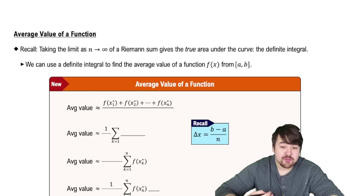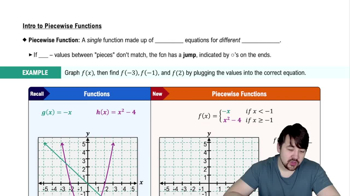Find the value of a that makes the following function differentiable for all x-values.
g(x) = { ax, if x < 0
x² − 3x, if x ≥ 0
 Verified step by step guidance
Verified step by step guidance Verified video answer for a similar problem:
Verified video answer for a similar problem:



 5:02m
5:02mMaster Determining Differentiability Graphically with a bite sized video explanation from Patrick
Start learning